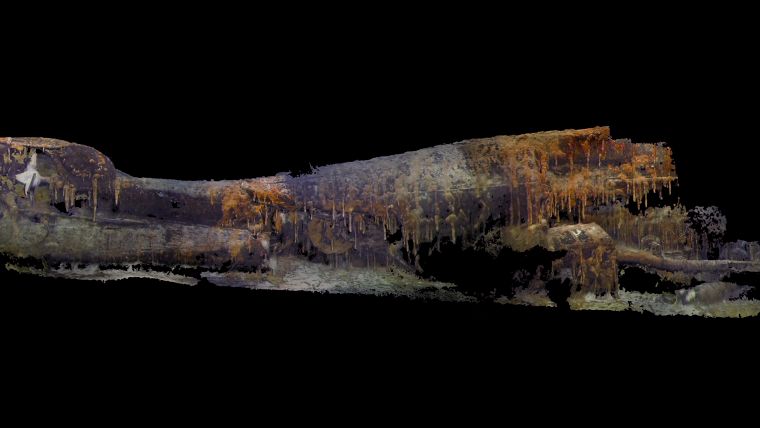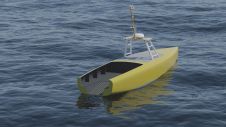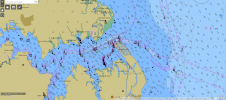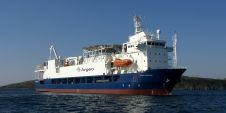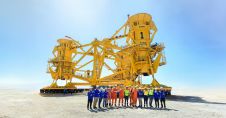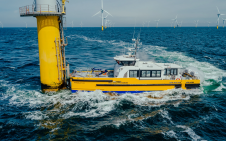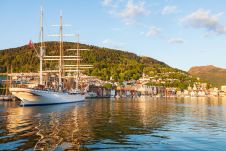How robotic technology officially identified the World War II submarine S-28 grave-site
Discovered by the Lost 52 expedition team
After 75 years, and using advanced imaging technology, ocean explorer Tim Taylor and his Lost 52 expedition team have officially discovered the final resting place of the 49 sailors of the US submarine S-28 (SS-133) off Oahu, Hawaii. The US Navy recently validated the identity of the wreck, which Taylor located in 2017.
The date of 4 July 2019 marks the 75th anniversary of the submarine loss, which was conducting exercises at the time that she disappeared. “The discovery of the USS S-28 as part of my ‘Lost 52 Project’ continues to honour the men, their mission and their memory. It is important that they not be forgotten and that future generations recognize their invaluable sacrifice for our country and the world,” said Taylor.
“Identification of a Navy gravesite is something Naval History and Heritage Command’s Underwater Archaeology Branch takes great care in doing,” said Sam Cox, director of Naval History and Heritage Command. “After an exhaustive review of the data provided by Tim Taylor’s team, we can positively identify the wreck as S-28.”
Tim Taylor is a renowned ocean explorer, expedition leader and underwater robotics expert who has spent 29 years exploring the oceans. He has collaborated with noted geologists, marine biologists, archaeologists and coral and shark scientists. His research vessel Tiburon has been the platform for numerous scientific expeditions, including work with the Hawaiian Undersea Research Laboratory, Mote Marine Lab, Scripps, University of Miami, NOAA, National Geographic, National Science Foundation and the US Navy. Taylor was inducted as a fellow in the Explorers Club in 2004, for his discovery of Sherwood Forest, the sanctuaries cornerstone reef in the Florida Keys National Marine Sanctuaries.
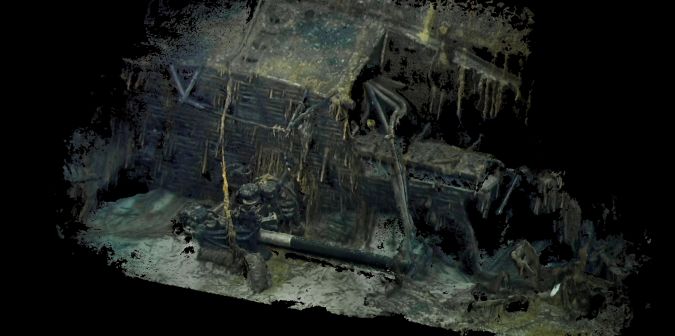
Robotic technology
In 2008, Taylor received the Explorers Club ‘Citation of Merit’ for his contributions to exploration. Over the past decade, his focus has been on the utilization of robotic technology in underwater expeditions. He pioneered a 1,500-metre deep AUV search for submerged cultural resources spanning three years and 1,800 square miles. His recent discoveries include three US WWII submarines – the USS R-12, USS S-26 and the recently added USS S-28 discovered near Oahu, Hawaii, in 2,650 metres of water with 49 servicemen entombed.
He and his wife Christine Dennison are recipients of the Brazil Navy League’s Medal of Honour and have been awarded the Brazilian Navy’s distinguished title of ‘Honorary Submariner’ for their discovery and ongoing research work of the USS R-12. To date, they have discovered the final resting places of 129 US Navy servicemen and two Brazilian officers.
Taylor has been profiled in the UK Financial Times, The New York Times and Bloomberg News and is a regular contributor on FOX, CNBC, BBC, CBC and CNN as an ocean technology and robotics expert. He is president of Tiburon Subsea Services specializing in supplying autonomous underwater robotics and founder of Ocean Outreach, home of the ‘Lost 52 Project’, which is dedicated to educating the next generation of ocean advocates.
The ongoing multi-year project is supported by STEP Ventures, who are dedicated to continuing the work of the ‘Lost 52 Project’ and who share the commitment to preserving and honouring the legacy of the lost WWII submariners and the bravery of the sailors for future generations.
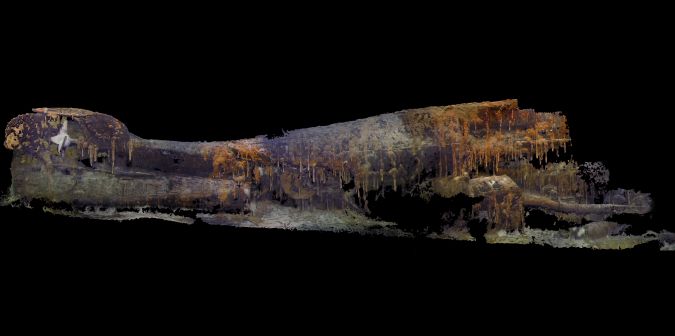
First World War
The keel of USS S-28 (SS-133) was laid down in April 1919, just months after the end of the First World War. Commissioned on 13 December 1923, the S-class submarine spent 16 years taking part in various Navy exercises in the Caribbean and eventually the Pacific.
When Pearl Harbour was attacked on 7 December 1941, she was being overhauled at Mare Island Naval Shipyard outside of San Francisco, California. She was one of several S-boats put into service in World War II and was initially sent to Alaska to defend the Aleutians against a possible Japanese invasion. By mid-November, S-28 had arrived at Pearl Harbour and for the next seven months trained in the waters around the island.
Antisubmarine warfare
On 3 July 1944, S-28 embarked on an antisubmarine warfare training exercise off the coast of Oahu, Hawaii. During the training, communication became sporadic and the boat sent her last communication to the Coast Guard cutter Reliance in the evening of 4 July. The Navy’s search of the area did not reveal the location of the submarine and two days later a diesel oil slick appeared in the area. Later, a Navy Court of Inquiry could not determine the cause of the loss. During her service in WWII, she completed six war patrols and earned one battle star.
“We’re thankful for the care and attention Tim and his team took in locating the wreck. Because of their efforts, we now know the final resting place of our shipmates. This discovery helps to ensure their service will always be remembered, honoured and valued and we hope provides some measure of closure to their families,” continued Cox.
S-28 (SS-133) rests in approximately 2,650 metres of water, which made locating the ship impossible at the time, due to the technological limitations of the era. After its initial discovery, archaeologists conducted exhaustive research to ensure its identity. In the case of S-28, the location at which it was discovered offered a key clue to its identity.
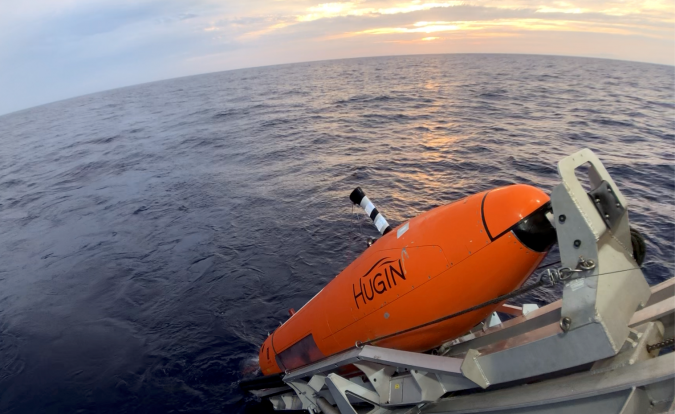
Advanced photogrammetry
Following World War II, the US tested ordnance and scuttled US and Japanese ships in the vicinity of the wreck site. Records indicated that her sister ship, USS S-35, had been scuttled in that same area. Finding the subtle differences between the two series of S-class submarines demanded some technical expertise and analysis. Through Taylor’s research, paired with historical archives, the Naval History and Heritage team were able to positively identify the wreck by comparing design differences. Records revealed that the hulls had uniquely different cowling covers on the forward bow planes.
The investigators also considered some likely superstructure modifications and the probability that deck guns were removed from the S-35 before it was scuttled as possible indicators. Ultimately, however, the cowlings provided the evidence that the team needed to make the final confirmation. “The differences in external configurations are minimal on these 100-year-old submarines, but the cowlings are a distinct indicator,” states Taylor.
Taylor’s team utilized advanced photogrammetry to create imaging that allows them to research the site long after they have returned to the dock. The data produced by their expedition was key in helping to confirm that they were looking at the S-28 and not the S-35.
The Lost 52 Expedition 2017 deploys state-of-the-art deepwater autonomous underwater vehicles (AUVs) as well as remotely operated vehicles (ROVs). Tim Taylor has a reputation for working with the latest in undersea technology and with the top specialists in underwater exploration.
The Lost 52 Project
The Lost 52 Project is a long-term exploration and underwater archaeological project that is documenting and preserving the story of the Lost 52 WWII Submarines, leaving a foundation of knowledge for future generations. Building on our current discoveries, ocean exploration and underwater robotics expertise, our team is organizing, executing and managing expeditions with the goal to discover and survey as many of the lost 52 US WWII submarines as possible. Information: www.lost52project.org.
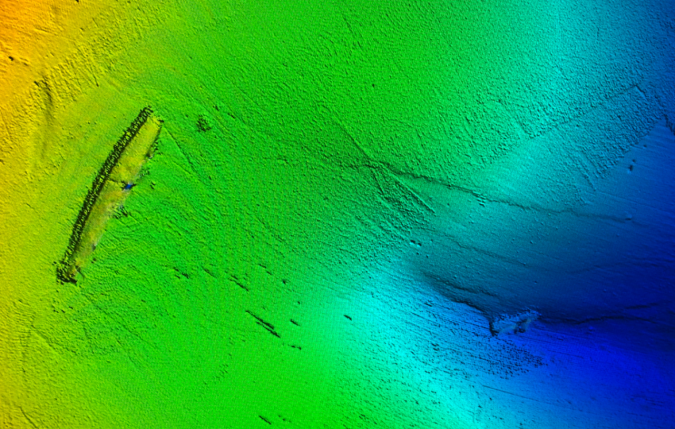

Value staying current with hydrography?
Stay on the map with our expertly curated newsletters.
We provide educational insights, industry updates, and inspiring stories from the world of hydrography to help you learn, grow, and navigate your field with confidence. Don't miss out - subscribe today and ensure you're always informed, educated, and inspired by the latest in hydrographic technology and research.
Choose your newsletter(s)
